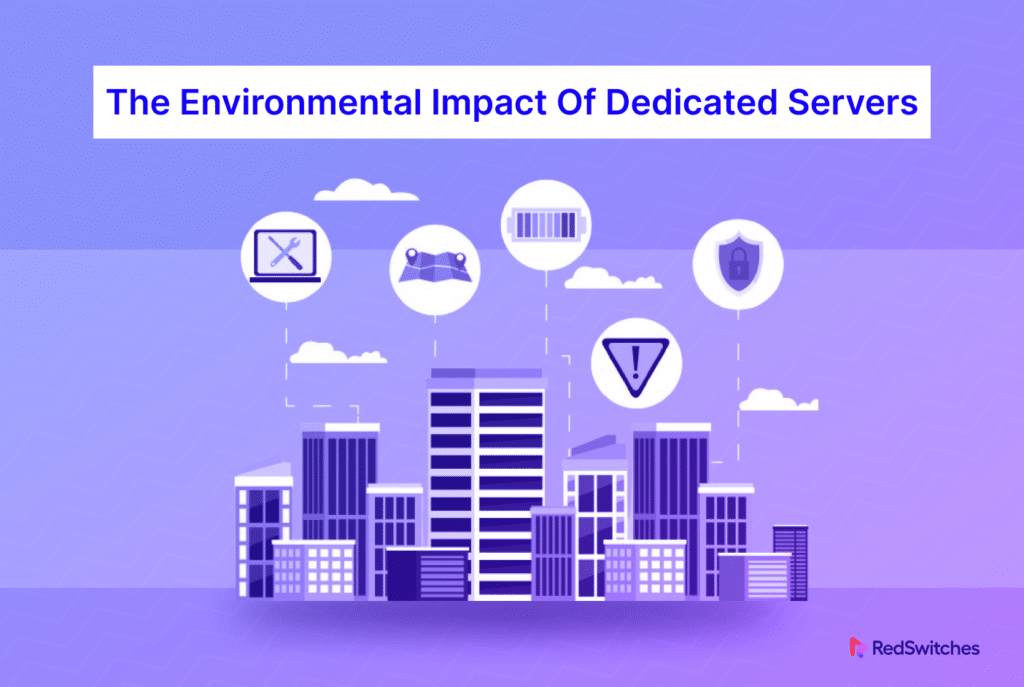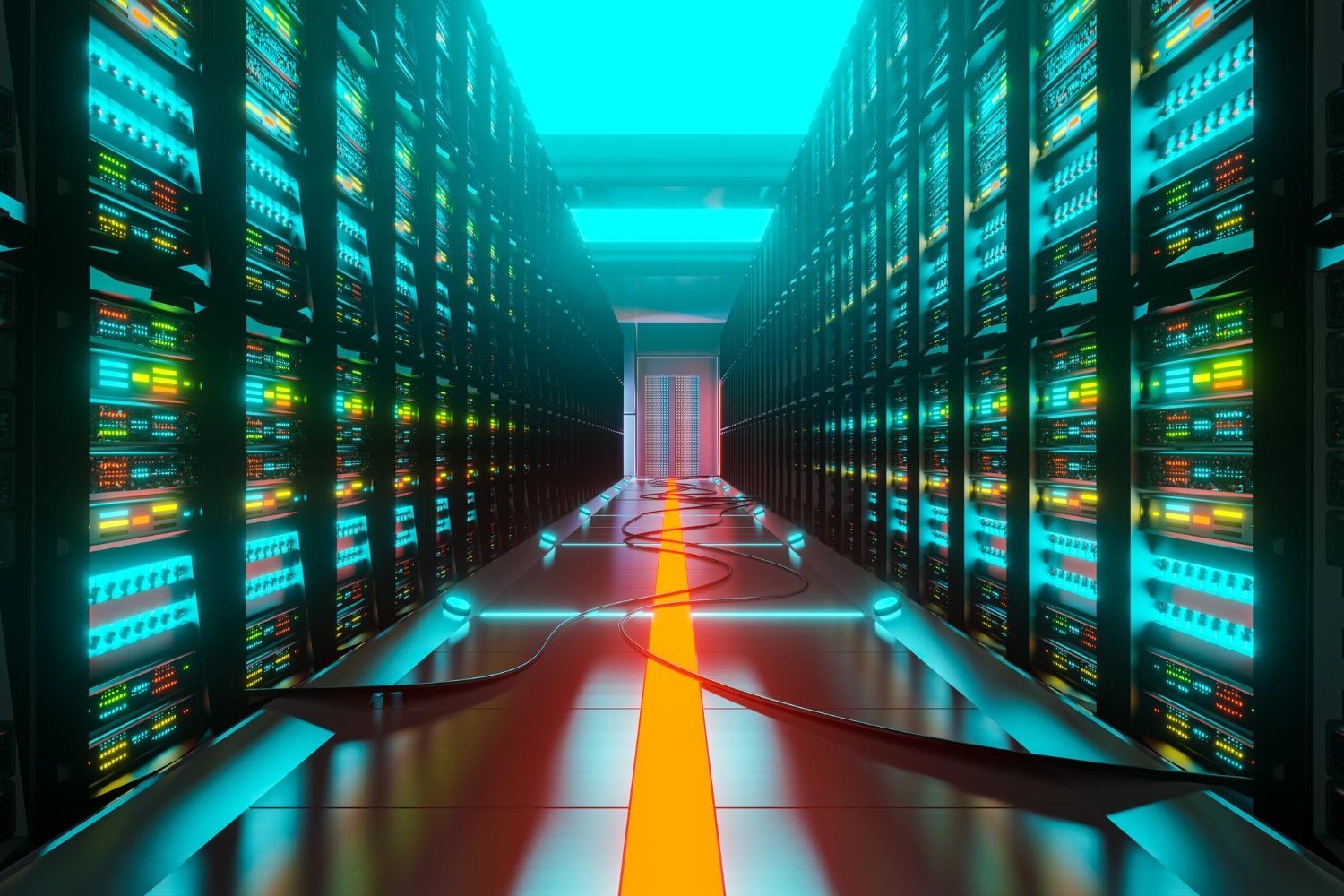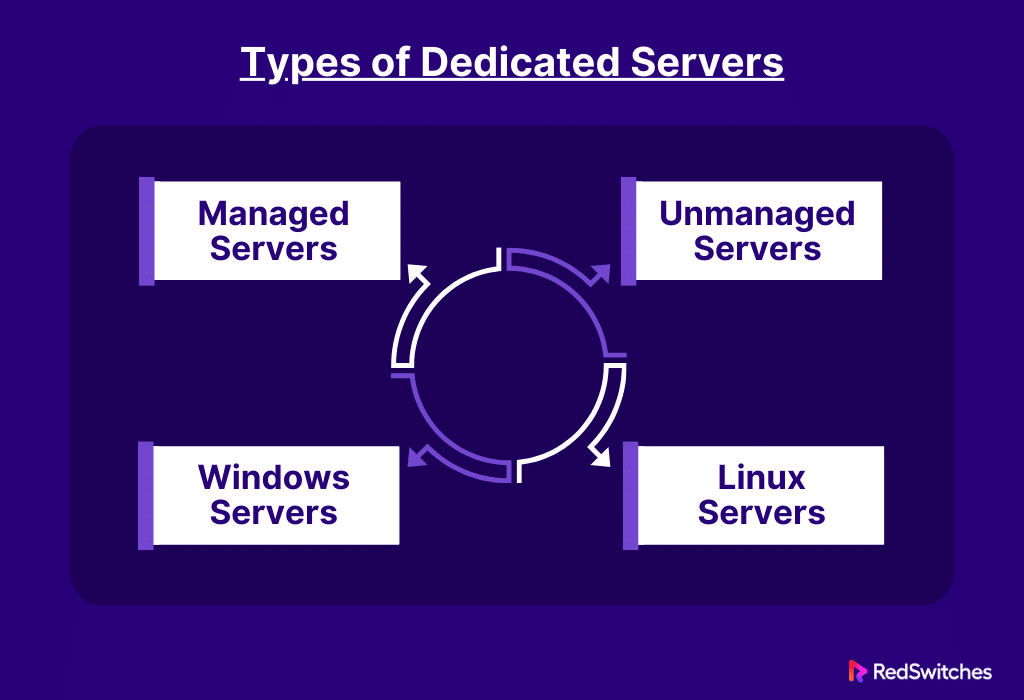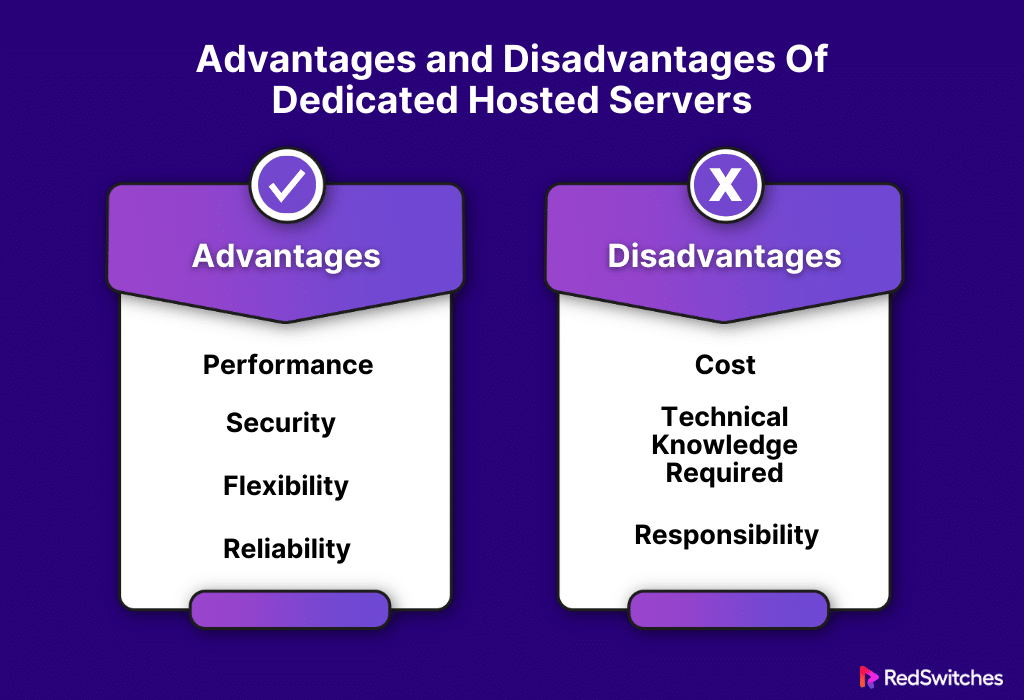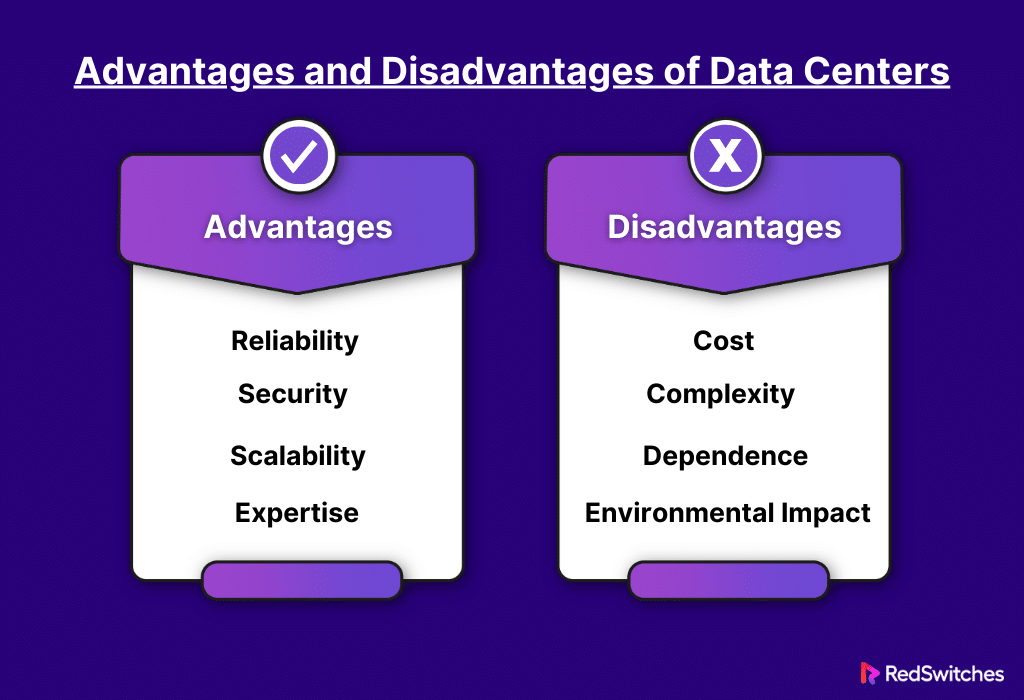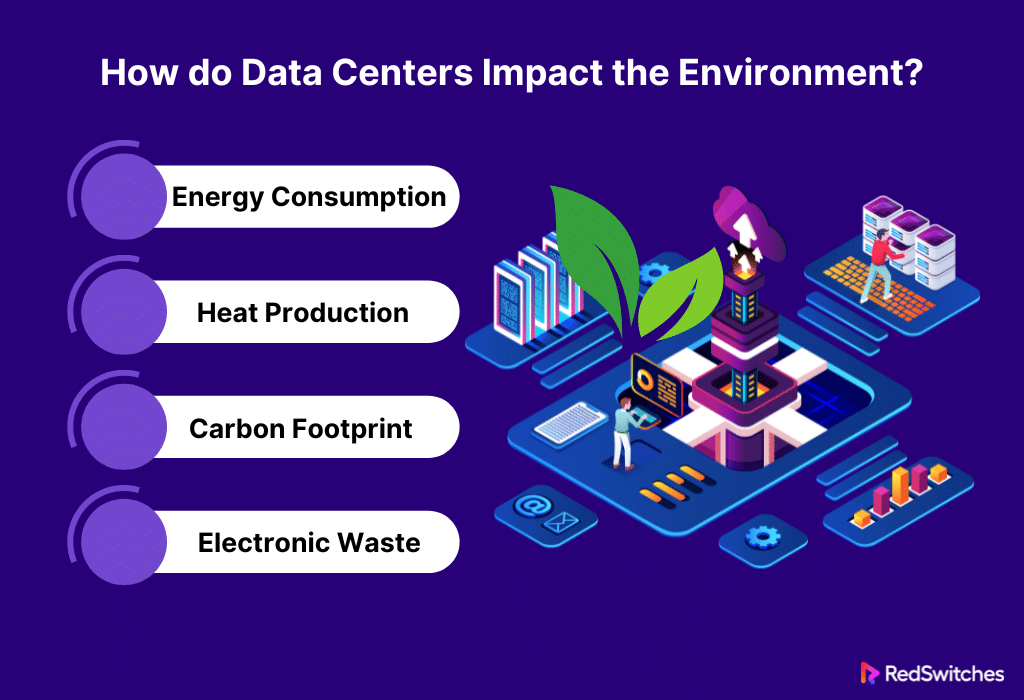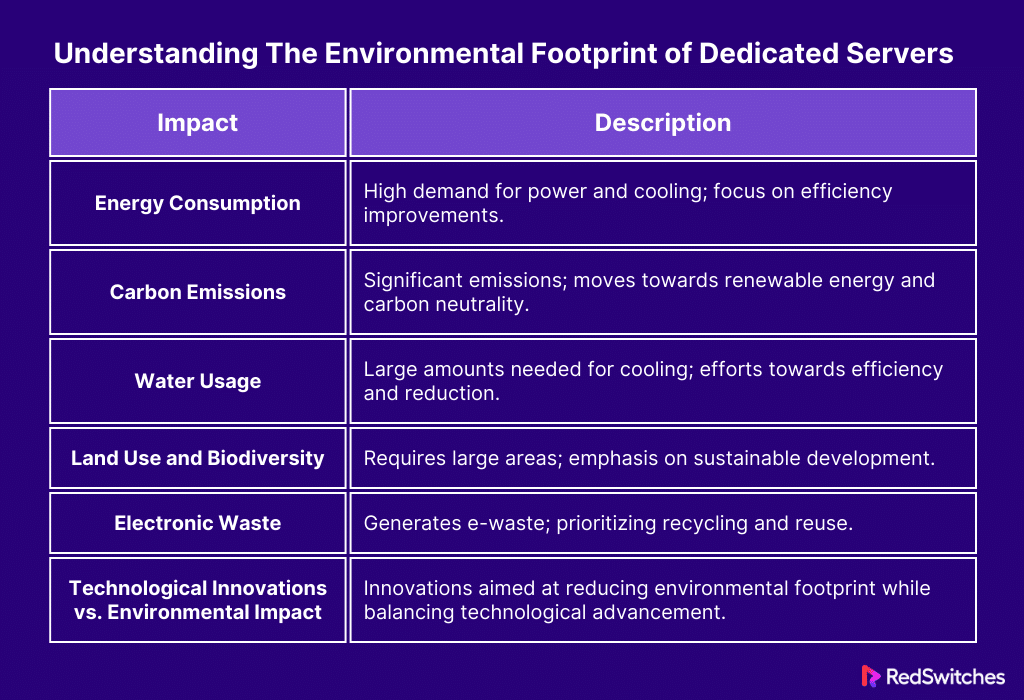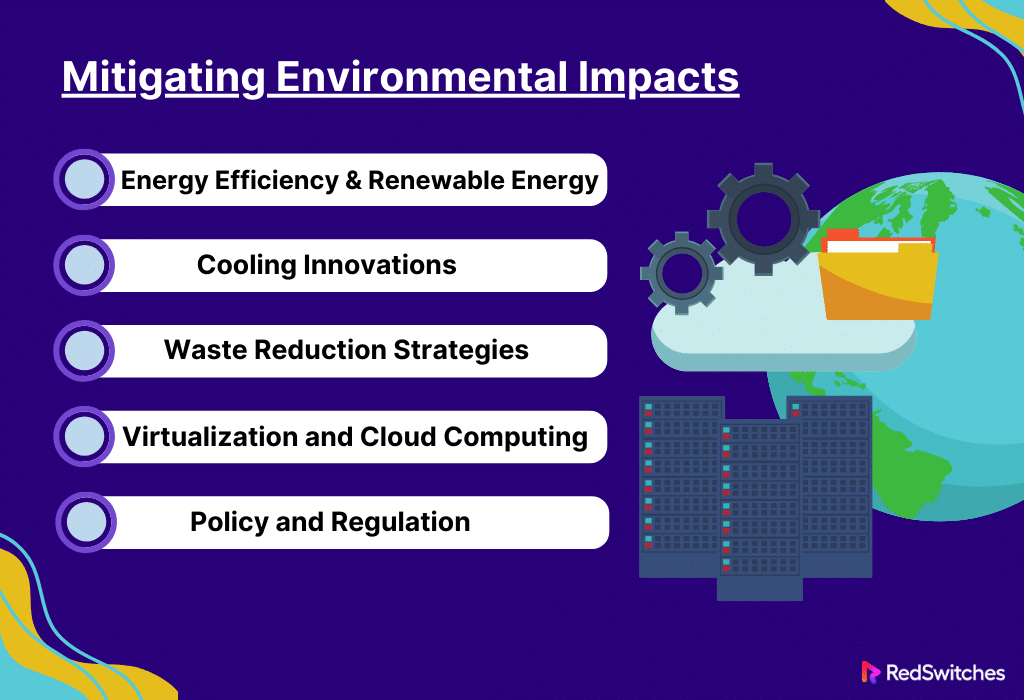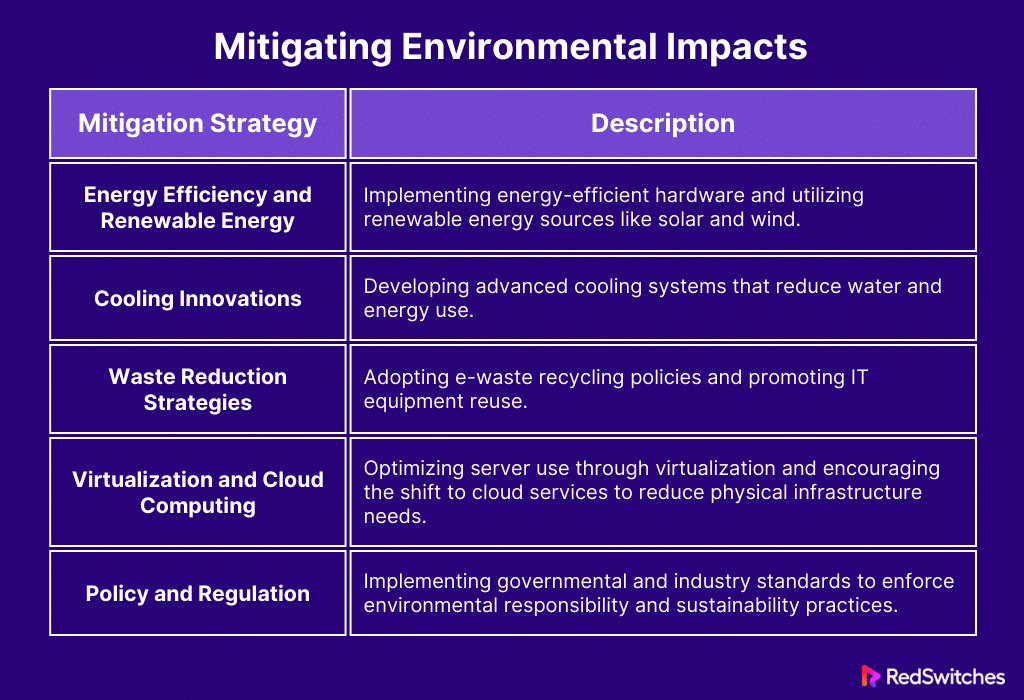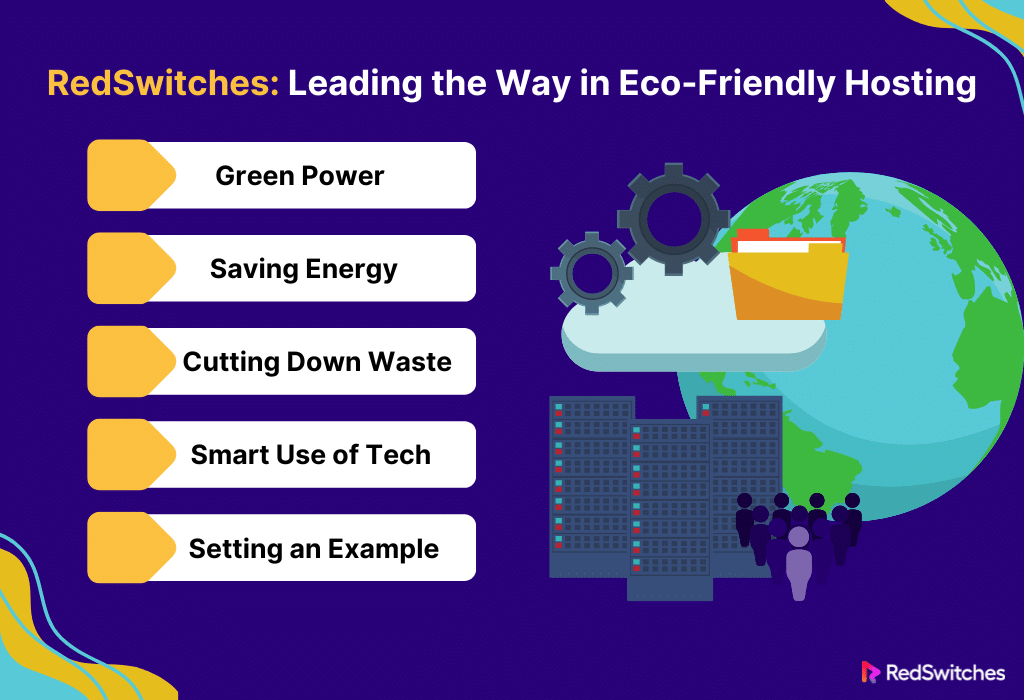Key Takeaways
- Dedicated servers are essential for the Internet but have a significant environmental impact due to high energy consumption and carbon emissions.
- There are various servers, managed, unmanaged, and those running on Windows or Linux, each serving different needs.
- The environmental footprint of servers involves extensive energy use, carbon emissions, water usage, land and biodiversity impact, and electronic waste.
- Data centers housing these servers contribute to 1% of the world’s energy demand, highlighting the scale of their environmental impact.
- Cooling systems in data centers, necessary to prevent overheating, significantly increase energy consumption and water use.
- Renewable energy initiatives and carbon offsetting are among the strategies used to reduce the carbon footprint of data centers.
- Technological innovations, including more efficient cooling methods and energy-saving hardware, aim to mitigate environmental impacts.
- Virtualization and cloud computing effectively optimize server use, reduce physical infrastructure needs, and lower environmental impact.
- Government policies and industry standards on environmental responsibility are crucial for promoting sustainable data management practices.
- RedSwitches exemplifies an eco-friendly hosting approach by utilizing renewable energy, implementing energy-saving technologies, and reducing waste, setting a standard for sustainability in web hosting.
In our digital age, dedicated servers are the backbone of the internet. They store and manage vast data for websites, applications, and online services. But have you ever thought about their impact on our planet?
Running these servers 24/7 consumes a lot of energy. It requires power for the servers and cooling systems to keep them from overheating. This energy contributes to climate change by releasing harmful carbon emissions.
A study found that data centers that house these servers could use up to 1% of the world’s energy demand. That’s a huge amount! This article will explore environmental impact of dedicated server.
We’ll look at their energy use, the waste they create, and more. Plus, we’ll discuss ways to reduce these impacts. It’s time to think about the internet not just as a virtual space but as something that has real-world effects on our planet.
Table of Contents
- Key Takeaways
- What Are Dedicated Servers?
- What Are Dedicated Data Centers?
- Understanding The Environmental Footprint of Dedicated Servers
- Mitigating Environmental Impacts
- RedSwitches- Leading the Way in Eco-Friendly Hosting
- Conclusion
- FAQs
What Are Dedicated Servers?
Credits: Freepik
What is a dedicated Server ? Dedicated hosted servers are powerful computers used exclusively by one client. Unlike shared hosting, where multiple clients use the same server, a dedicated hosted server serves only one client. This setup offers full control over the server, including the choice of operating system, hardware, and software. Businesses and high-traffic websites often use dedicated hosted servers for their online operations.
Types of Dedicated Servers
Several dedicated hosted servers are designed to meet different needs.
Managed Servers
A hosting company manages these servers. They take care of setup, maintenance, and support. This option is great for businesses that don’t want to handle technical tasks themselves.
Unmanaged Servers
The client is responsible for managing these servers. This includes everything from the operating system to security updates. This choice suits those with technical knowledge who want more control.
Windows Servers
These servers run on the Windows operating system. They are ideal for hosting applications that require Windows, such as those built on ASP.NET.
Linux Servers
These servers use the Linux operating system. They are popular for their stability and security. Linux servers are often chosen for web hosting.
Advantages and Disadvantages Of Dedicated Hosted Servers
Advantages and disadvantages of dedicated servers. Understanding these can help you decide if a dedicated hosted server is right for you.
Advantages
- Performance: Dedicated hosted server specs provide high performance. Since you’re not sharing resources with other clients, your website can run smoothly, even with high traffic.
- Security: With the best-dedicated hosting server, you have complete control over security measures. This means you can implement the best practices to protect your data.
- Flexibility: You can customize your server to meet your specific needs. This includes choosing your hardware, software, and operating system.
- Reliability: Dedicated hosted servers are reliable. You don’t have to worry about other clients’ activities affecting your website’s uptime.
Disadvantages
- Cost: Dedicated servers are more expensive than shared hosting. The high price covers the cost of the server and its maintenance.
- Technical Knowledge Required: You need technical skills for unmanaged dedicated servers. Managing a server includes tasks like installing updates and monitoring security.
- Responsibility: With a dedicated hosted server, you’re responsible for everything from ensuring smooth operation to fixing any issues.
Also Read : Role of dedicated server hosting
What Are Dedicated Data Centers?
Credits: Freepik
Dedicated data centers are large facilities that house servers and other computing equipment. These centers are designed to meet the needs of a single organization or a specific service. Unlike shared data centers, a dedicated data center serves only one client. This setup gives the client full control over the data center’s operations, security, and management.
Advantages and Disadvantages of Data Centers
Data hosting facilities, where large amounts of digital data are stored and managed, offer significant benefits but also come with drawbacks. Understanding these can help businesses and individuals make informed decisions about their data management strategies.
Advantages
- Reliability: These facilities offer high uptime, ensuring data is always accessible when needed. They are equipped with backup systems and redundancies to protect against failures.
- Security: Advanced security measures, including physical security and cybersecurity protocols, protect sensitive data from unauthorized access and breaches.
- Scalability: As data storage grows, these facilities can easily accommodate increasing demands without businesses needing to invest in physical infrastructure.
- Expertise: Professional management by experts ensures that the latest technologies and practices are employed for optimal data storage and security.
Disadvantages
- Cost: The high level of service comes at a premium, making it potentially expensive for small businesses or individuals with limited budgets.
- Complexity: Navigating the options and managing contracts with these facilities can be complex and time-consuming.
- Dependence: Relying on external facilities can create a dependence that may be risky if the provider experiences downtime or security issues.
- Environmental Impact: These large-scale facilities’ energy consumption and carbon footprint are significant environmental concerns.
In summary, while data hosting facilities offer robust solutions for data management, weighing their advantages against the disadvantages is crucial for making the best choice for one’s specific needs.
Also Read : Dedicated Server Security and how to keep your server safe
How do Data Centers Impact the Environment?
Data centers impact the environment mainly through their energy use and heat production. Let’s break this down:
Energy Consumption
Data centers need a lot of electricity. They use it to power servers, storage systems, and networking equipment. Cooling systems also need electricity to run. These systems keep the equipment at the right temperature. Because data centers use so much power, they can greatly affect the environment.
Heat Production
All the equipment in a data center produces heat. Managing this heat is important. If it gets too hot, the equipment can stop working correctly. Cooling systems help, but they also use a lot of energy. This creates a cycle of energy use that can harm the environment.
Carbon Footprint
The energy that data centers use often comes from sources that produce carbon dioxide. This gas contributes to climate change. The more energy a data center uses, the bigger its carbon footprint.
Electronic Waste
Data centers also create electronic waste. When equipment gets old or breaks, it needs to be replaced. The old equipment can become waste. If not disposed of properly, it can harm the environment.
Data centers play a big role in our digital world. They support websites, apps, and many services we use every day. But they also have an impact on the environment. It’s important to understand this impact. That way, we can find ways to make data centers more eco-friendly.
Understanding The Environmental Footprint of Dedicated Servers
Credits: Freepik
Dedicated servers are like the engines of the internet. They keep websites and online services running smoothly. But these engines need energy to work. They run all day and all night, every day of the year. This constant use means they have a big impact on the environment. The main issues are the energy they use and the heat they create. Both can harm our planet.
In this section, we will dive deeper into the dedicated servers environmental impact. We’ll look at how they use energy, the kind of waste they produce, and more. Understanding this can help us find ways to reduce their impact on the environment.
Energy Consumption
Hosting environments demand a lot of power. They need to run hardware and keep data flowing 24/7. This section examines how energy needs are met, kept cool, and made more efficient.
Power Needs
High-capacity hosting centers use a lot of electricity. They power many machines to store and send data around the clock. Keeping these machines running uses a lot of energy. This is a big part of their environmental impact.
Keeping Things Cool
Cooling is crucial in these environments. Machines get hot when they work hard. If they get too hot, they can break. Cooling systems help prevent this. They use fans, air conditioning, and sometimes even water to decrease temperatures. But cooling also uses a lot of power.
Making Things More Efficient
Efforts to use energy better are important. Hosting centers are finding ways to do this. They use energy-saving hardware and design their spaces to keep cool more naturally. They also use smart systems to manage power use better. These steps help cut down on energy use. This makes hosting more eco-friendly.
In sum, hosting environments are working to use power better. They face challenges like high power needs and the need for cooling. But they are taking steps to improve. By focusing on energy efficiency, they aim to reduce their environmental impact.
Carbon Emissions
Servers used by a single client can greatly impact the environment through carbon emissions. These emissions come from the energy used to run and cool the servers.
Scope of Emissions
The energy that powers these servers often comes from fossil fuels. Burning fossil fuels releases carbon dioxide into the air. This gas is a major cause of climate change. The more energy these servers use, the more carbon dioxide they produce.
Renewable Energy Initiatives
Some companies are turning to green energy to power their servers. This can include solar, wind, or hydroelectric power. Using renewable energy can greatly reduce carbon emissions. It’s a step towards making these servers more eco-friendly.
Carbon Offsetting and Neutrality
Another way to deal with emissions is through carbon offsetting. This means investing in projects that reduce carbon dioxide elsewhere, like tree planting or renewable energy projects. The goal is to balance out the emissions produced. Some companies aim for carbon neutrality. This means they offset all the carbon dioxide their servers produce. It’s a big challenge but important for protecting our planet.
Water Usage
Servers that serve a single client also use water. This might surprise you. But, water plays a big role in keeping these machines cool and running well.
Cooling and Operations
Cooling systems are key for these servers. Some cooling methods use water. This is because water can take away heat well. These systems might use water to cool the air around the servers or directly cool the machines with water. But, using water like this can add up. In places where water is scarce, this can be a big issue.
Water Efficiency Strategies
There are smart ways to use less water. One way is to use air cooling when possible. This can cut down on water use. Another way is to recycle water. Some systems can clean and reuse water many times. This is much better for the environment.
Also, using advanced cooling technologies can help. These might include systems that use outside air to cool the servers. This is called “free cooling.” It can work well in cooler climates. It cuts down on both energy and water use.
Lastly, monitoring water use is important. Knowing exactly how much water these systems use can help companies find ways to use less. They can fix leaks or improve the system to make it more efficient.
In short, while these servers need water for cooling, there are many ways to make that use more efficient. This can help save water, a precious resource, and reduce the environmental impact of these machines.
Land Use and Biodiversity
Servers for a single client take up land. They need space for data centers. These places can be big. They can change the land around them and affect plants and animals.
Data Center Siting
Choosing where to put these centers is important. The goal is to find places where they do less harm. This means avoiding areas with lots of wildlife or rare plants. It also means not building on farmland or near important water sources. Picking the right spot can lower the impact on nature.
Sustainable Site Development
Once a site is chosen, building in a way that helps the earth is key. This can include using materials that are good for the planet. It can also mean designing buildings that use less energy and water. Some centers even create green spaces around them. This can help local plants and animals.
Building up, not out, is another idea. This means making taller buildings on smaller pieces of land. This leaves more space for nature.
Smartly using the land also means thinking about the future. As technology gets better, servers might need less space. Planning for this can help make sure land is used well over time.
In short, where and how these centers are built can make a big difference. It’s about balancing the need for technology with caring for the earth. Choosing sites carefully and building sustainably makes it possible to reduce the impact on land and biodiversity.
Electronic Waste
When servers for a single user become old or break, they become electronic waste (e-waste). This is a big problem. E-waste can harm the planet if not handled right.
E-Waste Generation
These servers have parts that don’t last forever. Over time, they need to be replaced. This creates a lot of e-waste. The problem is that e-waste can have harmful materials. These materials can pollute the air, water, and soil if they enter the environment.
Recycling and Reuse
There are good ways to deal with e-waste. Recycling is one. It means taking apart the old servers and using the parts again. This can help reduce the need for new materials. It can also cut down on the e-waste that ends up in landfills.
Another way is reuse. Sometimes, parts from old servers can still work well. They can be used in other machines. This can give them a new life and prevent waste.
Companies can also think about how they design servers. Making them easier to take apart can help with recycling. Using materials that are less harmful to the environment can also make a big difference.
In short, e-waste from servers is a challenge. But, we can lessen its environmental impact with smart recycling and reuse. This is important for keeping our environment safe and healthy.
Technological Innovations vs. Environmental Impact
The digital revolution has brought unprecedented technological advancements, transforming every aspect of our lives. However, this progress comes with a significant environmental cost. While essential, the servers at the heart of this transformation are a double-edged sword in terms of environmental sustainability.
The Environmental Toll of Progress
The demand for more powerful and efficient computing resources grows as technology advances. This demand increases energy consumption, carbon emissions, and electronic waste (e-waste). Each new iteration of technology, while potentially more energy-efficient, also accelerates the obsolescence cycle. This creates a paradox where technological advancements contribute to and mitigate environmental damage.
Energy Consumption and Carbon Footprint
The energy needed to power and cool large-scale computing infrastructures is immense. Traditional energy sources, predominantly fossil fuels, exacerbate the carbon footprint of these operations. While newer models of computing equipment are designed for greater efficiency, the sheer scale of global digital infrastructure means that overall energy consumption continues to rise.
Innovations in Energy Efficiency
In response to these challenges, technological innovations aim to reduce the environmental impact. Renewable energy sources, such as solar and wind, are increasingly integrated into power grids supporting these technologies. Innovations in cooling technologies, including liquid and geothermal cooling, offer ways to reduce energy use further.
Material Use and E-Waste
The lifecycle of computing equipment is a significant source of e-waste, a rapidly growing environmental concern. Innovations in material science aim to create more sustainable and recyclable materials for use in manufacturing computing equipment. Additionally, efforts to extend the lifespan of devices through modular designs and upgradeability help reduce the pace at which items become e-waste.
The Role of Artificial Intelligence
Artificial intelligence (AI) offers promising solutions for optimizing energy use and reducing waste. AI algorithms can predict and manage the energy needs of computing infrastructures more efficiently than ever. This can lead to significant reductions in energy consumption and carbon emissions.
Towards a Sustainable Future
The path to sustainability requires a balanced approach that embraces technological innovations while minimizing environmental impacts. Policies and practices that encourage using renewable energy, promote energy efficiency, and reduce e-waste are crucial. The tech industry’s commitment to these principles and consumer demand for more sustainable products can drive meaningful change.
The relationship between technological innovations and environmental impact is complex. While technological advancements are indispensable for economic growth and social progress, they must be pursued with an eye toward sustainability.
Balancing these needs is one of the defining challenges of our time, requiring collaborative efforts across industries, governments, and communities worldwide. The future of our planet depends on our ability to harness technology not just for progress but for the preservation of our environment.
Also Read : Empower with Xeon: Exploring the Benefits of Xeon Dedicated Servers , How Dedicated Servers Support E-commerce Platforms
Mitigating Environmental Impacts
Mitigating the environmental impacts of our digital infrastructure is crucial for a sustainable future. As technology advances, the environmental footprint of our data management systems also grows. However, several strategies and innovations can help reduce this impact.
This section explores various methods to lessen these essential systems’ environmental burdens.
Energy Efficiency and Renewable Energy
One of the primary ways to mitigate environmental impacts is through improving energy efficiency. This involves optimizing the hardware and software to do more with less energy. Manufacturers are constantly working on creating more energy-efficient components. On the software side, developers can design applications and data processes that require fewer computational resources.
Additionally, shifting towards renewable energy sources is vital. Solar, wind, and hydroelectric power can provide cleaner energy options for powering data centers. Many organizations now invest in renewable energy projects or purchase green energy credits to offset their carbon footprint.
Also Read : Understanding Dedicated Server Hardware
Cooling Innovations
Cooling systems are essential for maintaining the optimal performance of data handling equipment but are also a significant source of energy consumption. Innovations in cooling technology, such as ambient air cooling in cooler climates or advanced liquid cooling systems, can significantly reduce energy use. Additionally, using recycled water or rainwater in cooling systems can reduce environmental impact.
Waste Reduction Strategies
Minimizing waste, especially electronic waste (e-waste), is crucial. Implementing more robust recycling programs for old equipment can help. Moreover, designing systems with longevity in mind, where components can be easily upgraded rather than replaced, can reduce waste. Encouraging equipment reuse, either within the organization or through donations to others, can extend the life cycle of these resources and reduce e-waste.
Virtualization and Cloud Computing
Virtualization allows for the more efficient use of resources by running multiple virtual machines on a single physical machine. This can significantly reduce the number of physical machines required, lowering energy consumption and the physical resources needed for data handling operations. Similarly, cloud computing can optimize resource use by distributing computing tasks across a network of servers, ensuring that energy is used more efficiently and reducing the overall environmental impact.
Policy and Regulation
Government policies and regulations are critical in mitigating environmental impacts. Implementing standards and regulations that require energy efficiency and renewable resources can drive industry-wide changes. Additionally, incentives for companies that adopt green technologies can accelerate the shift towards more sustainable practices.
Mitigating the environmental impacts of our digital infrastructure requires a multi-faceted approach. From adopting energy-efficient technologies and renewable energy sources to innovating in cooling systems and waste reduction, many strategies can help reduce the environmental footprint. Moreover, the role of policy and regulation in promoting sustainable practices is indispensable.
By collectively pursuing these strategies, we can ensure that our reliance on digital technologies advances harmoniously with our environmental responsibilities, paving the way for a more sustainable future.
This comprehensive approach underscores the importance of proactive measures in reducing the environmental impacts associated with data management systems, highlighting the need for continuous innovation and commitment to sustainability across the industry.
Also read Cloud Server vs Dedicated Server: Comparing the Differences and Dedicated Servers for Gaming: Transforming the Multiplayer Experience
RedSwitches- Leading the Way in Eco-Friendly Hosting
In the world of web hosting, making the right choice matters, especially regarding the environment. RedSwitches stands out for its strong commitment to sustainability. This section explains why RedSwitches is a top choice for eco-conscious businesses.
Green Power
RedSwitches leads with green energy. We use energy from the sun, wind, and water. This choice cuts down on carbon emissions. It shows they care about the planet. By choosing renewable energy, RedSwitches sets a high standard for eco-friendly hosting.
Saving Energy
Saving energy is key at RedSwitches. We use modern tech to make their systems use less power. This includes better cooling systems and power supplies that waste less energy. These steps lower the amount of energy they use. It makes our hosting more eco-friendly.
Cutting Down Waste
Dealing with waste, especially old tech, is important to RedSwitches. We recycle and get rid of old equipment in a safe way. We also try to reuse parts when we can. This approach helps the environment. It reduces the need for new materials.
Smart Use of Tech
RedSwitches uses smart tech to do more with less. We create virtual spaces that run on one physical machine. This means they need fewer machines. It leads to less energy use and a smaller environmental footprint. This smart use of tech helps both RedSwitches and the planet.
Setting an Example
RedSwitches is a role model in eco-friendly hosting. We use green energy, save energy, reduce waste, and use tech smartly. All these steps show our commitment to the environment. Choosing RedSwitches means your bare metal server hosting is good for the planet.
In short, RedSwitches is a great choice for businesses that care about the environment. Our approach to using renewable energy, saving energy, managing waste, and using tech wisely sets us apart. By working with RedSwitches, businesses can support a more sustainable future.
Conclusion
In wrapping up, we’ve delved deep into the environmental footprint of data hubs. These essential digital backbones power our online life but come with significant environmental costs. The impact is wide-ranging from consuming vast amounts of energy to emitting carbon, using water, affecting land and biodiversity, to generating e-waste. However, the path to mitigation is clear and achievable.
We can steer these hubs toward a more sustainable future by embracing energy efficiency, renewable energy sources, cooling innovations, waste reduction strategies, and the power of virtualization. Regulation and policies are crucial in guiding and enforcing these eco-friendly practices.
This journey towards sustainability is not just a choice but a necessity for our planet. And here’s where making the right choice matters. Choosing RedSwitches means aligning with a partner who prioritizes the environment as much as performance. RedSwitches stands out by offering digital infrastructure solutions that are conscious of their environmental impact, leading the charge toward a more sustainable digital realm.
Ready to be part of the change? With RedSwitches, your digital demands meet environmental responsibility. Let’s move forward together towards a greener, more sustainable future. Discover how RedSwitches can make a difference for you and the planet. Take the step now.
Also Read : Importance of Data Center Location in Dedicated Server Hosting , Evolution of Dedicated Servers in the Hosting Industry
FAQs
Q. How do servers impact the environment?
Servers impact the environment by consuming large amounts of electricity, leading to high carbon emissions, heat generation requiring cooling systems, water use for cooling, land use for data centers, and electronic waste.
Q. How much CO2 do servers produce?
The CO2 production varies widely depending on the energy source. On average, a server can emit around 0.5 to 1.5 kg of CO2 daily, which can be significantly higher for energy-intensive operations.
Q. Are cloud servers more environmentally friendly?
Yes, cloud servers can be more environmentally friendly due to their ability to dynamically allocate resources, leading to higher efficiency and lower energy use per task than traditional servers.
Q. What is the environmental impact of web hosting?
Web hosting impacts the environment through energy consumption for server operation and cooling, carbon emissions from electricity generation, and electronic waste from outdated hardware.
Q. What is the carbon footprint of hosting a website?
The carbon footprint of hosting a website depends on the website’s traffic, complexity, and the hosting server’s efficiency. It can range from a few grams to several kilograms of CO2 per year, with larger sites on less efficient servers generating more emissions.
Q. What is a dedicated hosted server, and how does it impact the environment?
A dedicated hosted server is a hosting solution where a single physical server is dedicated to a single client. This hosting option has an environmental impact due to the energy usage and resource allocation needed to maintain the server.
Q. How does the hosting industry contribute to greenhouse gas emissions?
The hosting industry contributes to greenhouse gas emissions through the energy consumption of servers, cooling systems, and other hardware within data centers.
Q. What are some energy-efficient practices in server hosting?
Energy-efficient practices in server hosting include using servers with energy-efficient hardware, utilizing renewable energy sources, and optimizing resource allocation to reduce energy waste.
Q. What is the carbon footprint of VPS hosting compared to dedicated server hosting?
VPS hosting typically has a lower carbon footprint than a dedicated hosted server because it allows for resource sharing among multiple clients on a single physical server, leading to better resource utilization.
Q. How do green hosting providers combat climate change within the hosting industry?
Green hosting providers prioritize using energy-efficient server hardware, renewable energy sources, and implementing practices to reduce greenhouse gas emissions, thus contributing to combating climate change.
Q. Why is managed server hosting a popular choice for those concerned about the environmental impact?
Managed server hosting is popular among those concerned about the environmental impact because hosting providers offer carbon-neutral options and prioritize environmentally responsible practices, reducing the overall carbon footprint.
Q. How do hosting providers offer green hosting solutions within the hosting industry?
Hosting providers offer green hosting solutions by using energy-efficient hardware and renewable energy sources and implementing environmentally responsible practices to provide hosting services with a lower environmental impact.
